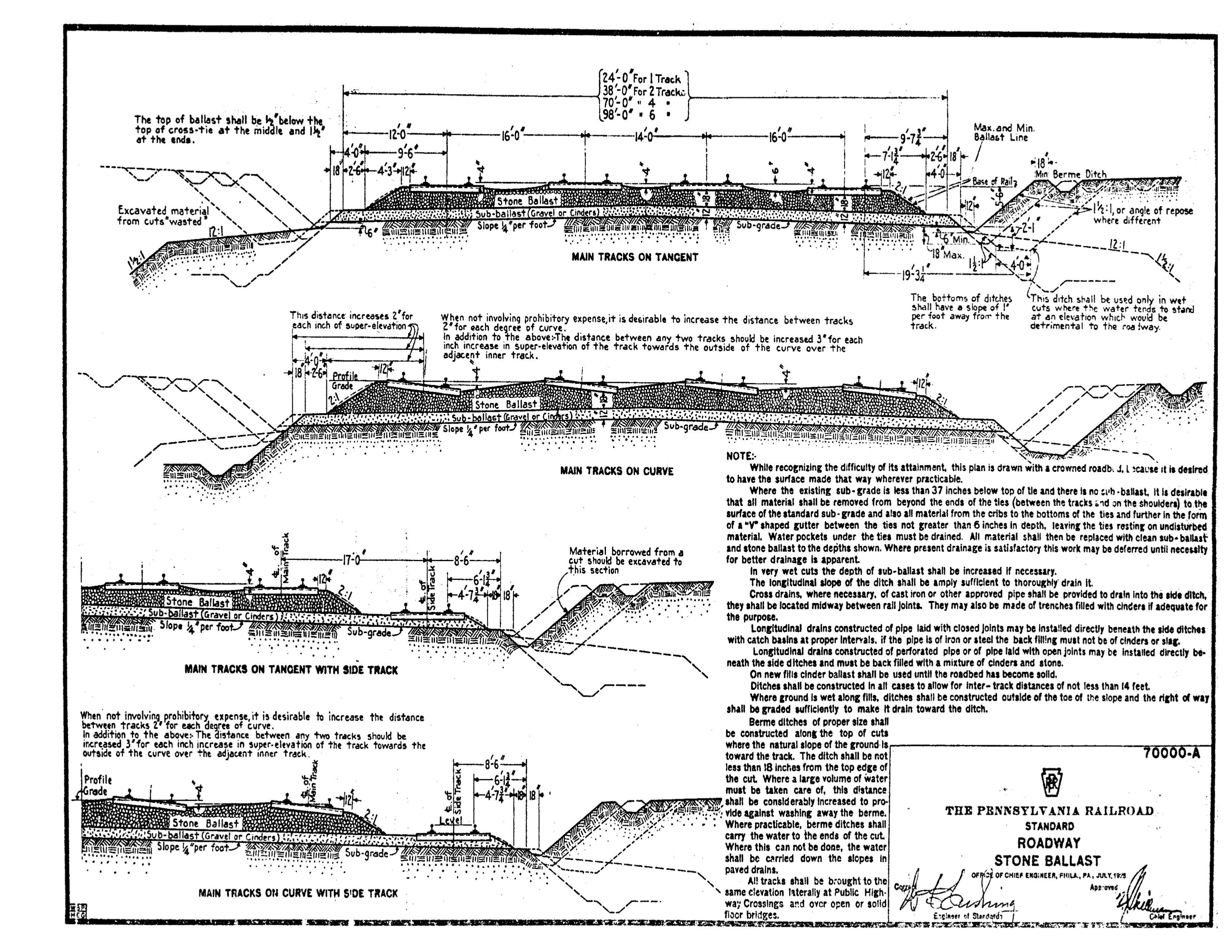Height of Track Bed
- Thread starter boleyd
- Start date
Follow along with the video below to see how to install our site as a web app on your home screen.
Note: This feature may not be available in some browsers.

It comes down to economics. The engineer (civil) asks "What are the minimum $$ needed for safe operation and minimum maintenance?" A heavy train at speed punishes the roadbed much more heavily than the same train at a crawl on a siding, spur or yard.
Ballast spreads the load over a wider area, promotes drainage and helps keep the track in place, so most permanent trackage will have some sort of ballast, even if it's just dirt. Temporary track such as logging lines and repair bypasses usually will have none. In steam days, cinders were cheap and plentiful so were often used.
You should note that sidings and yard tracks are typically lower than the main, conforming to the drainage plan, and have less and lighter ballast, and often lighter rail.
Happily there are plenty of varieties of track available in Trainz so it is easy to model all that.
:B~)
There are trackside items that will simulate a fade from shiny to rusty on the DLS. Not entirely prototypical but not too bad as it masks the sharp line between the two.
Try a dls search on "rusty" limited to trackside as I cant recall the name ATM.
